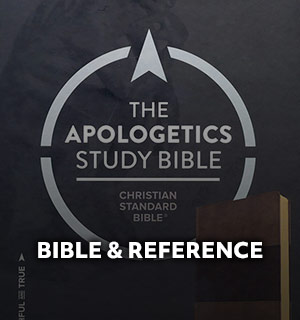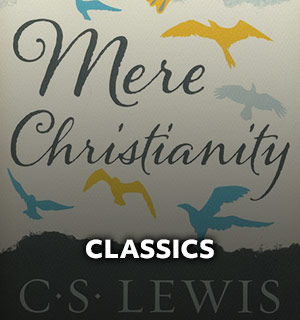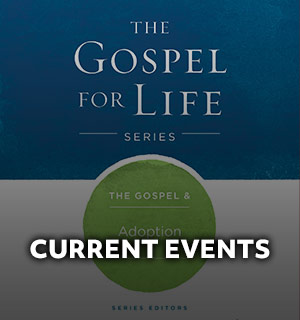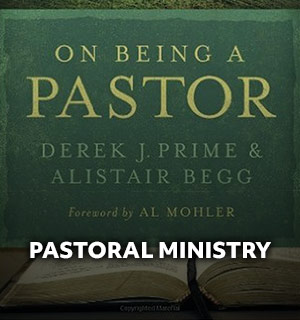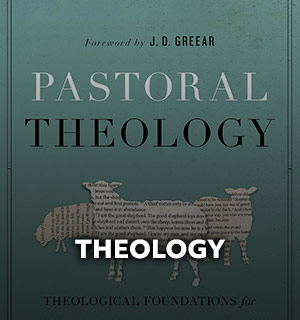
By Chris Hulshof
If Leviticus is the book at the beginning of the Old Testament that few Christians spend much time studying, then the Minor Prophets represent the books at the end of the Old Testament that get the same kind of treatment.
When was the last time you engaged in a study of Obadiah or Nahum? Further, if someone asked you what these two books were about, would you be able to give a concise and correct answer?
Six contextual considerations will help any student of God’s Word get a better grasp on the 12 books that make up the Minor Prophets.
1. Consider Personal Context.
The Minor Prophets include the books:
- Hosea
- Joel
- Amos
- Obadiah
- Jonah
- Micah
- Nahum
- Habakkuk
- Zephaniah
- Haggai
- Zechariah
- Malachi
A common misconception is that Christians aren’t familiar with these books. However, that’s often far from the truth.
For example, the average believer has a familiarity with Micah 6:8: “Mankind, he has told each of you what is good and what it is the Lord requires of you: to act justly, to love faithfulness, and to walk humbly with your God.”
What most Christians may not know is how that verse fits within the context of the message of Micah. One way to start a study of Micah is to begin with this verse and then work out from it. How does acting justly, loving faithfulness, and walking humbly with God fit within Micah’s full message to the Israelites?
The same is true about the Christmas and Easter passages from the Minor Prophets.
Consider Micah 5:2: “Bethlehem Ephrathah, you are small among the clans of Judah; one will come from you to be ruler over Israel for me. His origin is from antiquity, from ancient times.”
We understand this verse within its Christmas context, but how does it fit within the prophecy Micah delivered?
Or consider Zechariah 9:9: “Rejoice greatly, Daughter Zion! Shout in triumph, Daughter Jerusalem! Look, your King is coming to you; he is righteous and victorious, humble and riding on a donkey, on a colt, the foal of a donkey.”
We understand this verse as it relates to Easter and Palm Sunday, but what about an understanding of this verse as it relates to Zechariah’s context?
When it comes to studying the Minor Prophets, start with what you know.
In reality, we know more from these 12 books than we often give ourselves credit for. What we lack is an understanding of how the verses we know fit within the context of the original message of that particular minor prophet.
2. Consider the Historical Context.
The messages delivered by the Minor Prophets weren’t delivered in a vacuum. They were given to specific people at a specific time in the history of the nation of Israel.
One common mistake in our approach to studying the Minor Prophets is to miss how they fit into the history recorded in 1-2 Kings and 1-2 Chronicles.
Content from these historical books provide the backdrop to the prophetic proclamations of these 12 prophets. When we connect the message of a minor prophet to its historical context, we’ll get a full and proper perspective of that message.
For example, 2 Kings 14:23-29 tells us a little more about Jonah the prophet. These verses help us understand that Jonah was a prophet to the Northern Kingdom of Israel during the reign of the evil King Jeroboam II.
Before Jonah was a prophet to Nineveh, he was a prophet to Israel. This was a time of border expansion for Israel. It was an expansion that Jonah had predicted (2 Kings 14:25).
But, the Assyrians and their capital city of Nineveh remained an opposing foe who continued to torment Israel.
Placing Jonah in this historical context helps us get an understanding of Jonah’s role as a prophet and why he wasn’t interested in expanding his ministry beyond the borders of Israel and into Assyria.
It’s always wise to begin a study of a particular minor prophet by asking, “What can I learn from the elements of his story that are included in 1-2 Kings and 1-2 Chronicles?” This historical context is foundational to understanding the life and times of the prophet.
3. Consider the Literary Context.
Our modern Bible divides the 12 Minor Prophets into 12 individual books, and this is how we often come to understand them. They’re the last dozen books of the Old Testament.
Further, they’ve been given the name “Minor Prophets” and with that name comes the tendency to think their message was less important—and their impact insignificant—especially when compared to the Major Prophets.
Neither of these assumptions is true. Placing the Minor Prophets in their proper literary context means seeing them not as individual books but as one book altogether; the Book of the Twelve.
Reading and understanding them this way helps us see the common themes that run through these books as God deals with the covenant unfaithfulness of the nation of Israel.
Their message is a demonstration of the pursuing grace of God and the seriousness of the covenant violations of His followers.
Understanding the Minor Prophets in this unified context helps us see the way each of these books detail Israel’s unfaithfulness and God’s impending punishment.
However, these books also point to a future period of hope and restoration.
Taken together, the sound these books produce is not that of a single instrument playing a solemn tune in a minor key. Instead, they’re a 12-piece symphony boldly striking major key melodies of God’s justice and God’s mercy.
4. Consider the Covenantal Context.
You can’t make sense of the Minor Prophets without understanding the Old Testament covenants in general and the Mosaic Covenant specifically.
The message of each of these 12 prophets always came back to the various ways Israel had failed to keep the covenant they’d agreed to keep.
Perhaps the best way to begin any study of the Minor Prophets is to start by reading Deuteronomy 27-30. Here, the covenant blessing for obedience and curses for disobedience are spelled out plain terms.
It’s to this section of Moses’ farewell address to the Israelites that the Minor Prophets base their message. These 12 men aren’t predicting what may happen in the future if Israel remains disobedient.
Instead, they’re reminding an unfaithful people what God promised will happen now that they stand in violation of the covenant they affirmed during the final days of Moses’ leadership.
The Minor Prophets routinely preach a message that reminds the Israelites they’re continually guilty of things like idolatry, injustice, and being spiritually lackadaisical. Because of this, God has every right to follow through with the curses He identified in the covenant ceremony recorded at the end of Deuteronomy.
5. Consider the Kingdom Context.
There are two messages of hope in the Minor Prophets that can easily be overshadowed by the exacting of the covenant curses. The first message of hope centers around a coming kingdom of God.
The message of the 12 invariably leads back to the hope God will one day restore the Davidic dynasty by providing a new David to sit on David’s throne.
While the immediate future is one of exile and captivity, the distant future includes this new kingdom with a new David who reigns and rules over more than just Israel.
The authority of this new King extends to all nations. For the New Testament writers, these promises meet their fulfillment in the person of Jesus Christ.
6. Consider the Messianic Context.
The second message of hope is found in the coming Messiah. Just as the Minor Prophets frequently speak of a coming kingdom of God, so too, they speak of the coming Messiah.
God wouldn’t abandon His people or His promise to provide the curse breaker. He could be counted on to send the one who’d crush the head of the serpent.
To this end, reading the Minor Prophets means watching for the messianic promises. When we do this, we see Malachi proclaiming that God would send the one who’ll prepare the way and the one who is the way.
We read Zechariah identifying the coming Messiah as “the Branch.” Time and time again, the Minor Prophets return to the reality that the future hope is personal.
Hope for covenant breakers isn’t found in a recovery plan that gives 10 ways humanity can be better at obedience. Instead, hope for covenant breakers is found in the person of the coming Messiah.
There’s no reason to give the Minor Prophets the Leviticus treatment by not engaging them in serious study. Indeed, failing to study them will only hinder our historical and messianic understanding of the work of God.
When we keep in mind these six contextual handles, they give us the kind of direction necessary for a valuable study of these 12 books.
Chris Hulshof
Chris is an associate professor and department chair for Liberty University’s School of Divinity. He earned an Ed.D from Southeastern Baptist Theological Seminary with a focus on the intersection of disabilities, theology, and church ministry.
Is Jesus in the Old Testament?
Dr. Iain M. Duguid Ph.D.
FIND OUT MORE



